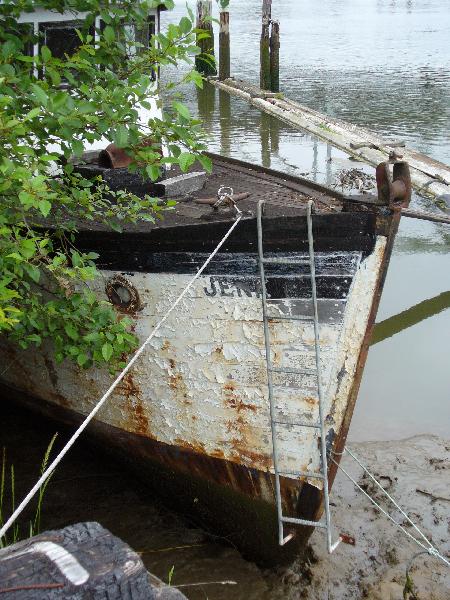One of the nifty advantages of being a volunteer is the ability to say, “Oops, we need to go off for a couple weeks, see ya.” That is what we are doing to Renee and Neil this week. Judy and I have been working weekends and evenings with them on their “Project House.” When we first arrived, the “Project House” was in a remarkable state of disrepair. Neil and I have been insulating, wiring and installing the wall board in the kitchen, bath and family room. Judy and Renee have been cleaning and painting the walls and ceilings of the living room and three bedrooms. Magically the garish green and blue and brown walls have disappeared and we no longer have to look at the 2×4 bones of the house. The house looks considerably better at this time, but there is still a lot of work needed to complete the project.
We are on the first leg of a two week loop around the state of Washington. First we buzzed out to the Port of Ilwaco at the mouth of the Columbia River to see the Tall Ships Festival. We were a little disappointed, however. There was only one ship there, the Hawaiian Chieftain. We found out that the Lady Washington had been there and was expected back later in the day. These two ships are sister ships and call Grays Harbor Washington their home port. The Lady Washington is 68 ft on deck and 56 ft at the waterline. She has a beam of 22 ft and is 90 ft tall at the main mast. The Hawaiian Chieftain is similar size. She is 65 ft on deck and 57 ft at the water line. Her beam is 22 ft and the main mast is 75 ft tall. The Lady Washington is called a Brig and the Hawaiian Chieftain is called a gaff rigged topsail ketch. These terms describe the layout of their sails. The Chieftain has more fore and aft sails, the Lady has more square rigged sails.
Tonight we are staying in Hoquiam Washington. The temperature is in the low 60’s today and there is a mist in the air. We grabbed the big umbrella and went for a two mile walk around town. There is a nice walkway along the West Fork of the Hoquiam River. It includes historical plaques showing where the first ferry in 1890 crossed the river. There are various mill sites and “The Store” where all of the loging camps picked up their supplies. They showed the first 8th street bridge. Toll for a horse and rider cost $0.25 for a round trip. A herd of cattle was $0.10 a head but that was for one way. Here is a photo of a fishing boat we found parked in the mud at the edge of the river.
We will close for now with love for all. Remember that life is a journey. Take time to enjoy the trip.
Gary and Judy
